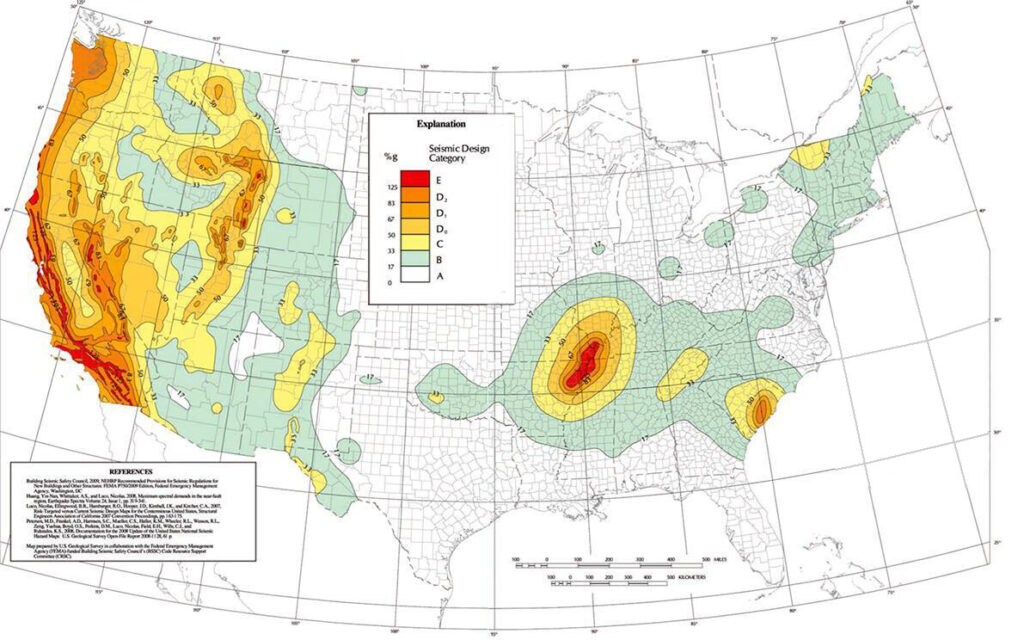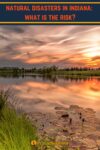Over 6 million people live in Missouri. Many of these people have experienced natural disasters in the state firsthand or had to evacuate because of disasters. However, many Missouri residents don’t realize just how many types of natural disasters can occur in the state.
This analysis covers what natural disasters occur in Missouri, the worst natural disasters to hit the state since 2000, and what residents can do to prepare.
Is Missouri At Risk of Natural Disasters?
Compared to the rest of the United States, Missouri has a medium risk of natural disasters. Excluding COVID, Missouri has had 45 disaster declarations since 2000. Of these, 37 were declared major disasters.
Missouri is also frequently hit by natural disasters, which cause more than $1 billion in damages. Since 2000, 75 separate $1-billion events have affected the state. Most of these were severe storms.
Worst Natural Disasters in Missouri By Cost (Since 2000)
- Hurricane Ike 2008: $40.8 billion
- 2012 Drought and Heat Wave: $39.3 billion
- February 2021 Winter Storm and Cold Wave: $25.6 billion
- 2022 Drought and Heat Wave: $22.2 billion
- Spring-Summer 2011 Drought and Heat Wave: $16.2 billion
Worst Natural Disasters in Missouri By Deaths (Since 2000)
- April 2011 Tornado Outbreak: 321 deaths
- February 2021 Winter Storm and Cold Wave: 262 deaths
- May 2011 Tornado Outbreak: 177 deaths
- 2022 Drought and Heat Wave: 136 deaths
- 2012 Drought and Heat Wave: 123 deaths
*Cost and death tolls are for the entire disaster, including in other states affected.
Most Common Natural Disasters in Missouri
1. Earthquakes
Missouri is located on the New Madrid Seismic Zone (NMSZ). While this zone doesn’t have earthquakes as frequently as those in the Western part of the USA, it has the potential for large, damaging earthquakes.
The NMSZ has approximately 200 earthquakes each year. Most of these are too small to be felt. However, there is an earthquake of magnitude 4.0 or greater in the zone approximately once every 18 months. A magnitude 5.0 quake occurs approximately once every 10 years.
Earthquakes of magnitude 7.0 or greater are also possible in the NMSZ. One of the largest earthquakes ever in the continental USA occurred in Missouri. The 1811-1812 New Madrid earthquakes were 7.5 to 8.0 magnitude. While Missouri has not had a mag 5.0 earthquake in recent history, the state has had numerous 4.0 or greater quakes.

2. Tornados
Mississippi averages 47 tornadoes per year. Because many of these are very destructive, the state ranks #10 in the USA for tornado risk.
Since 2000, there have been 247 tornado-related deaths in Missouri and over 2,000 injuries. The deadliest event was an F5 tornado that hit Jasper County, MS, on May 22nd, 2011. This tornado killed 158 people, injured 1,150, and caused $2.8 billion in property damage. An F4 tornado that occurred just weeks beforehand killed 14 and injured 200.
Even weak tornadoes in Missouri can be fatal and incredibly destructive. Because of this, it is especially important that Missouri residents have a tornado shelter and an emergency radio with tornado alerts set.
3. Flooding
Compared to the United States as a whole, Missouri is not at high risk for flooding. However, flood disasters are still common in the state.
Heavy rainfalls can cause rivers and streams to swell or trigger deadly flash floods. Because of climate change, flood risk will only increase in Missouri. By 2050, an estimated 9% of all properties in Missouri will be at substantial risk of flooding.
Missouri Flood Stats
- 255,700 properties at substantial risk in 2020
- 355,200 properties at risk by 2050
- 285,400 properties at substantial risk by 2050
- 96,700 properties at almost certain risk by 2050
- 106,400 FEMA flood damage claims since 2000
Which Areas of Missouri Are Most At-Risk of Flooding?
Floods can occur in all parts of Missouri, but some areas of the state are particularly at-risk. Below are the areas of Missouri with the greatest percentage of properties likely to experience flooding (based on 2020 calculations).
- Valley Park: 33%
- Osage Beach: 28%
- Waynesville: 22%
- Poplar Bluff: 21%
- Charleston: 21%
- Lake Ozark: 21%
- Scott City: 20%
In addition to these areas, many major cities in Missouri have thousands of properties at risk. This includes nearly 15,000 properties in Kansas City and over 13,000 properties in St. Louis.
4. Heavy Snowfall and Winter Storms
Missouri generally has mild winters. The state ranks #35 in the country for the most snowfall and #34 for the most snowfall days per year.
However, Missouri does sometimes have severe winter weather. This weather can catch residents unprepared. Vehicle accidents are a big problem for people not used to driving in snow. Missouri ranks #10 in the country for fatal winter vehicle accidents, despite not having many snowy days.
Missouri Winter Weather Stats
- Average snowfall per year: 13″
- Snowfall days per year: 12 days
- Coldest recorded temperature: -40°F in Warsaw in 1905
- Record snowfall: 24″ in Brunswick in 1925
5. Freezing Rain
The climate of the Midwest makes it ideal for freezing rain. Missouri doesn’t have freezing rain as frequently as states in the Northeast, but freeze events do occur. Some areas of Missouri can expect approximately 12-15 hours of freezing rain per year. The central and southwestern parts of the state are most at-risk.
Freezing rain most frequently occurs during December and January, but fall and spring freeze events also occur. Icy road conditions from the rain make vehicle accidents and injuries common.
It’s also common for people to lose power during freezing rain events, meaning that thousands can be left without a way to heat their homes during the coldest months.
6. Heat Waves and Droughts
Missouri is part of the “Extreme Heat Belt” in the central United States. This region is very at risk of what the National Weather Service calls “dangerous” and “extremely dangerous” heat days. A “dangerous” heat day is defined as one where the heat index is 103F, and an “extremely dangerous” day has a heat index of 124F or above, which is considered unsafe for all people for any amount of time.
By 2053, Extreme Danger days will affect an estimated 107 million people in the Extreme Heat Belt. In Missouri, more than 170,000 are considered vulnerable to extreme heat.
Currently, Missouri sees an average of 15 days per year of dangerous heat. However, this number is going to increase over the next few decades. By 2050, Missouri is expected to see 60 dangerous heat days yearly.
The risk of dangerous heat days is expected to increase throughout Missouri. However, Dunklin, Mississippi, and Pemiscot Counties are especially at-risk.
Droughts often accompany heat waves. As an agricultural state, droughts can be particularly devastating for Missouri and take a huge economic toll on the state.
7. Lightning
Missouri is one of the riskiest states when it comes to lightning strikes. In 2019 alone, there were over 4.6 million lightning strikes. When you factor in the state’s size, Missouri is one of the top 10 states for lightning strikes per square mile. In the period from 1959 to 2016, there were 101 lightning deaths.
8. Wildfires
In Midwest, Missouri ranks #4 for the average number of wildfires yearly. Because many of these fires are very large, the state ranks #4 in the region for the average number of acres burned annually.
Missouri’s wildfires are mostly human-caused, such as when people burn debris. The state is often under drought, so there is lots of dry brush that can ignite. And, because Missouri is a very windy state, wildfires can spread quickly.
Because of climate change, the risk of wildfires in Mississippi is only growing. By 2050, an estimated 54% of all properties in the state will be at risk of wildfire.
Missouri Wildfire Stats
- Acres burned in 2021: 40,262
- Number of fires in 2021: 1,531
- Average fires per year: 1,109
- Average acres burned per year: 7,498
- Percentage of state covered by forests: 33%
- Number of properties currently at risk of wildfire: 1,503,143


